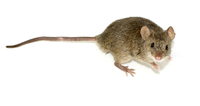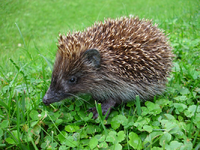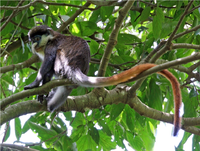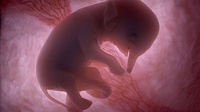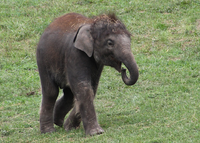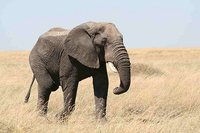Difference between revisions of "Mammal"
| Line 1: | Line 1: | ||
==Key Stage 1== | ==Key Stage 1== | ||
===Meaning=== | ===Meaning=== | ||
| − | + | A '''mammal''' is an [[animal]] with a [[backbone]] that feeds its young with [[milk]] and usually has hair. | |
: Singular [[Noun]]: '''Mammal''' | : Singular [[Noun]]: '''Mammal''' | ||
| Line 31: | Line 31: | ||
|A dolphin is a '''mammal''' that lives in the sea. | |A dolphin is a '''mammal''' that lives in the sea. | ||
|} | |} | ||
| + | |||
| + | ==Key Stage 2== | ||
| + | ===Meaning=== | ||
| + | A '''mammal''' is an [[animal]] with a [[backbone]] that feeds its young with [[milk]] and usually has hair. | ||
===Lifecycle of Mammals=== | ===Lifecycle of Mammals=== | ||
Revision as of 09:18, 17 August 2018
Contents
Key Stage 1
Meaning
A mammal is an animal with a backbone that feeds its young with milk and usually has hair.
About Mammals
- Most mammals have a layer of fur.
- All mammals have nipples.
- Female mammals make milk for their young.
- Most mammals give birth do live young.
Examples
| A mouse is a type of 'mammal called a rodent. | Dogs were bred by humans from wolves. | A hedgehog is a mammal that has very thick hairs that are spikey. |
| A monkey is a mammal that lives in trees. | A cow makes milk because it is a mammal. | A dolphin is a mammal that lives in the sea. |
Key Stage 2
Meaning
A mammal is an animal with a backbone that feeds its young with milk and usually has hair.
Lifecycle of Mammals
| Elephant Foetus | Baby Elephant | Adult Elephant |
| A mammal starts its life inside the mother getting its food through the umbilical cord. | When a mammal has been born it cannot eat so it gets milk from its mother to survive. | An adult mammal is mature and can have it's own offspring. |
Key Stage 3
An animal with a backbone that feeds its young with milk and keeps a constant internal temperature.
- Only two mammals lay eggs; the echidna and the duck billed platypus.
